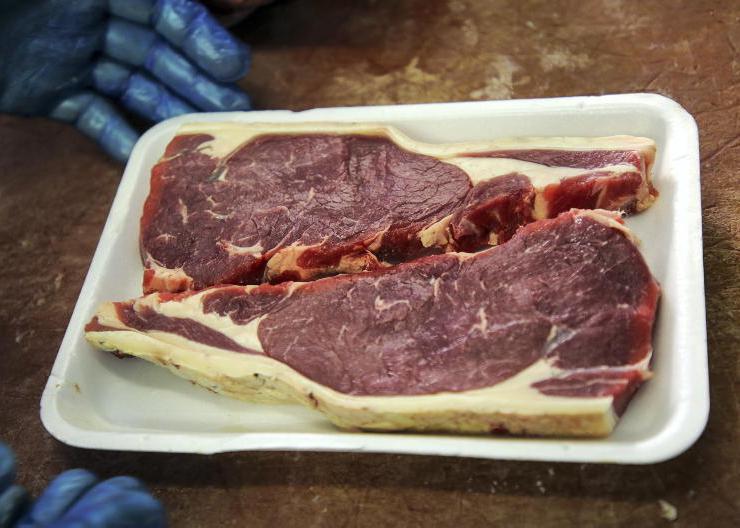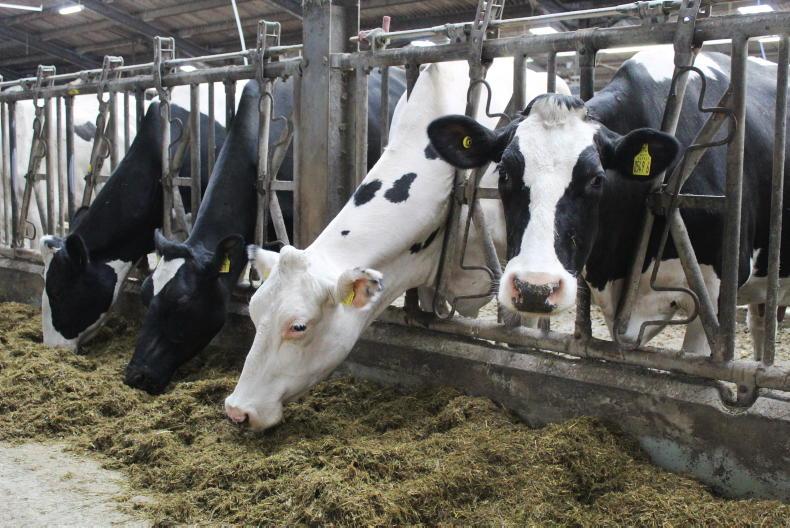Figures from 48 farms across the country indicate that the carbon footprint of Irish wheat, barley, oats and oilseed rape is among the lowest in the world.
The study also shows that when straw incorporation is carried out, this can make some Irish crops carbon neutral.
The findings were announced at Tirlán’s grain awards on Tuesday 20 February. Tirlán collected data from farmers and teamed up with Teagasc to analyse that data and determine average carbon footprints for the co-op's grain.
The carbon footprint is the amount of carbon released into the atmosphere when producing a unit of produce, in this case the kilogrammes of carbon produced per tonne of grain (kg CO2e/t).
Ireland has a target to reduce its carbon emissions from agriculture by 25% by 2030. Knowing the figures for all agricultural processes is an essential part of this.
Tirlán invested in this research to measure the carbon footprint of its portfolio of native Irish grains, stating that the figures should also help to grow the co-op’s grain and plant ingredients business.
Why is this important?
The research is huge. It is the first data set from Irish farms which shows a real carbon footprint for a number of different grains which has been made public.
Last year, Diageo released figures on malting barley, but this was using the 'Cool Farm Tool'. This new data from Tirlán has been entered into a model developed by Teagasc to calculate the carbon footprint of Irish grain.
Proving that Irish grain has a lower carbon footprint than the majority of grain across the world will provide a marketing advantage into the future, which should make Irish food exports more resilient and ahead of their competitors.
The Global Feed Lifecycle Assessment Institute (GFLI) is the main database which displays carbon footprints for many different feed ingredients from all over the world. These figures can be used to calculate the carbon footprint of animal feed. However, at present, the Irish figure in the GFLI database is not based on real data and is estimated.
This new data from Tirlán and Teagasc should help to change this and push for more data collection, increased funding and research in the area.
Robust figures
The data set is robust and representative. Tirlán was grateful for the co-operation of 48 growers in the project. Those 48 farms accounted for approximately 11,500ha, had 14 different crops and allowed 15,000 raw farm data points to be collected, equating to a total of 46,000 data points.
The 14 different crops were: winter wheat, spring malting barley, winter barley, spring and winter oats, winter and spring oilseed rape, spring feed barley, winter and spring beans, rye, peas, forage maize and whole crop winter wheat.
Farm and crop specific data was collected on soil type, cultivations, fuel, fertiliser, lime usage, plant protection, crop yields, straw yields and management and cover cropping.
What were the results?
Figure 1 shows the figures currently used for Ireland in the GFLI database alongside the average figures from the 48 farms which Tirlán gathered data from.
Teagasc director Frank O’Mara introduced the results this week and Teagasc’s head of crops environment and land use John Spink went through the details.
The average carbon footprint from the 48 farms was calculated for the different grains.
Oats had the lowest carbon footprint at 232kg CO2e/t. Wheat followed at 242kg CO2e/t, while barley came in at 256kg CO2e/t. Oilseed rape was much higher at 413kg CO2e/t. As noted in research from Teagasc published from the National Tillage Conference, oilseed rape yields are low on a tonnage basis, but if based on units of energy, then the footprint would likely be lower as it is a high energy crop.
As is evident from the list of 14 crops across the farms, crop rotation was good on most farms, with break crops helping to reduce inputs. Fertiliser manufacture was one of the main contributors to carbon emissions on the farms, along with fertiliser and lime application and fuel. Carbon emissions due to lime are high in the year it is spread, but, over time, lime application can help to reduce fertiliser use.
Plant protection and seed were small contributors. Nitrous oxide release from crop residues was another contributor, with more energy, fuel calculations making up the majority of the remainder.
Interestingly, the figures in the GFLI database for these crops at present are much higher than those calculated by Tirlán. In fact, the GFLI figure was 119kg CO2e/t higher than the Tirlán figure.
Oats and wheat were both 96kg CO2e/t lower in the Tirlán figures compared with the GFLI and the carbon footprint of oilseed rape was 50% lower in Tirlán’s figures.
This highlights the need for further research.
It should be noted that these figures are based on green grain and 25kg of CO2e/t were added to the calculations to account for grain drying.
Table 1 compares the Tirlán figures to GFLI figures for Ireland and countries around the world. The Tirlán figures are the lowest figures for wheat, barley, oats and oilseed rape.
Carbon neutral grain
Irish farmers are now chopping thousands of acres of straw each year. This is incentivised with payments and is part of the Climate Action Plan, as chopping straw allows carbon to be stored in the soil rather than being lost to the atmosphere.
The research showed that oats crops with chopped straw are carbon neutral or very close to it in some cases.
However, it is important to note that the figures outlined only count emissions. Carbon storage from straw incorporation or cover crops, for example, would be rewarded through carbon credits or payment where measured and accounted for.
Proving Irish grain is the best in the world
Speaking to head of grains at Tirlán John Kealy, he said that this data will allow the commercial team to promote and sell Tirlán produce based on its carbon credentials. Oat crops with chopped straw are carbon neutral – that’s a major selling point.
At last year’s grain awards, John said that Irish oats are “the best oats in the world”.
"This study further supports our oat product sales, which have been based more on purity and grain quality. Now to be able to demonstrate our low environmental impact, which we’ve all believed for a long time, is really powerful," John commented.
He explained that Tirlán produces 500,000t of animal feed each year and, with more research, these figures will allow the animal feed footprint to be developed to improve calculations for the footprint of milk and meat. John noted that a budget is needed from Government to build on this research.
The data collected from Tirlán is a major step, but there are many more steps to be taken and funding will be needed to get national figures and methods to calculate those figures which can be followed nationally. It’s a positive step on the way to adding value to Irish grain.









SHARING OPTIONS